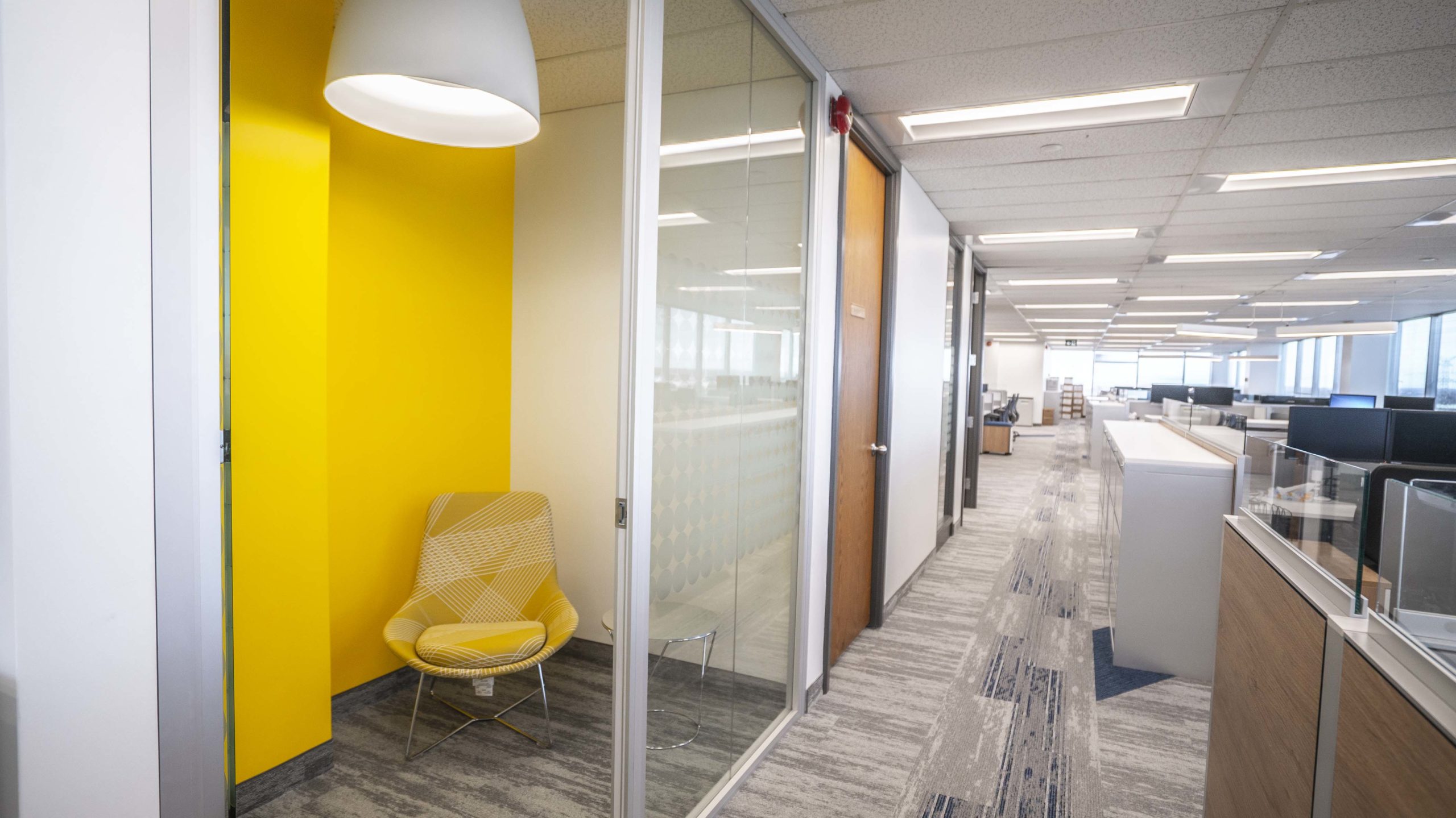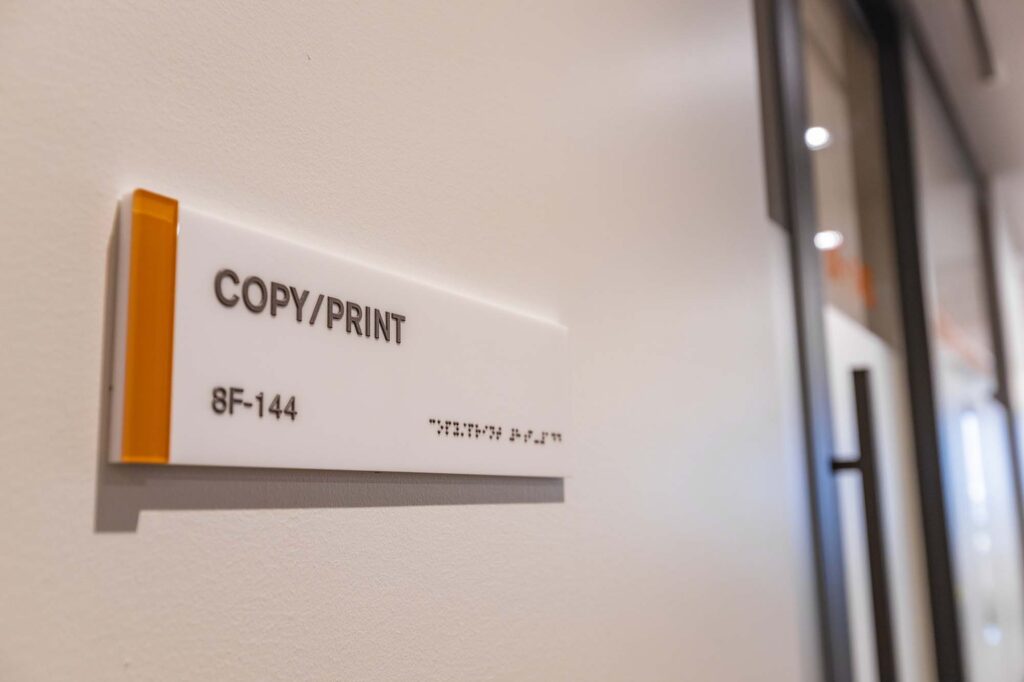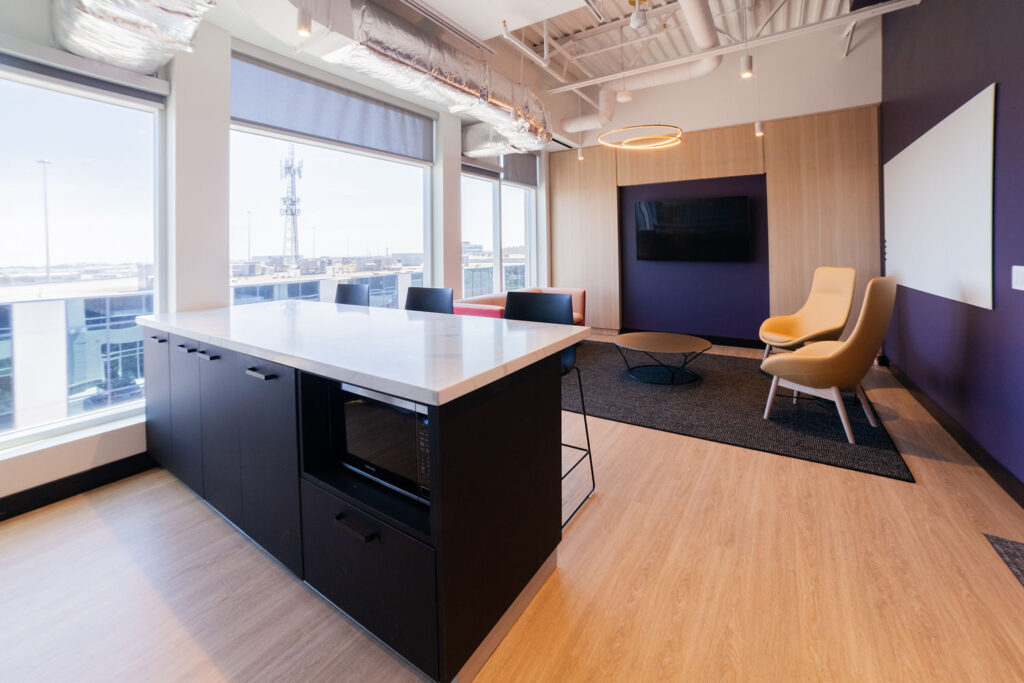What is the hype about hybrid – IS YOUR BUSINESS READY FOR HYBRID WORK?
Learn about What exactly is “hybrid working” and how Mayhew can help you successfully implement a hybrid environment:
Much has been written about the hybrid work environment but, do we really understand what hybrid working is, and the pros and cons of this environment?
First, a definition: ”hybrid working” is an operational arrangement whereby a company offers their staff a combination of office-based and remote work. While the past required all employees to be physically present in the office, the future is about flexibility, agility, blending in-person and remote collaboration. Hybrid working means employees are spending less time in the office and have more flexibility in when and how their work gets done. This shift has required office design to evolve, to support a more transient workforce that is expecting a more purposeful and functional office.

Says Brooke Weddle, a partner at McKinsey & Co. based in Washington, D.C., and leader in the firm’s organization practice: “The hybrid return-to-work model is top of mind for executives — every client I’ve spoken with has asked me about it. Companies can engage employees in productive remote work as long as employees’ desires and needs for flexibility are balanced with efforts to lead effectively and promote a sense of cultural cohesion,” she said. “A hybrid work model also opens the door to accessing new pools of talent without location constraints.”
Where companies decide to retain their real estate, workspaces can be redesigned to enable hybrid working or sub-let additional space.
As companies return to the office, the hybrid working model has proven to be a popular way of working and companies are seeing the benefits of hybrid work across their business operations. Employee experience and engagement is essential to keeping staff happy in the hybrid workplace.
While some leaders are considering a “collaboration-only” workplace, employees also need access to private spaces. Without options for privacy, the workplace won’t address how work really gets done. People who make the commute into the office are unlikely to collaborate all day long. Three of the top four elements people value more now relate to access to private spaces. Hybrid means offering team members options for privacy – whether they have a private office or not.
The following are the elements that should be incorporated into a Hybrid Environment:
- Hybrid collaboration spaces
- Single-person enclaves for hybrid meetings
- Privacy
- Workspaces with full or partial enclosure
- Reservable workspaces
- Flexible furniture
- Informal spaces to connect with colleagues
- Large number of collaborative spaces
Whether you are relocating offices or adapting your existing workplace, understanding how hybrid working can help your business achieve and clearly communicating this with staff is crucial.
The hybrid workplace should be driven by a positive employee experience and a clear vision of how to deliver on business objectives.
Here are a few tips that will help in creating a hybrid environment:
- Establish your objectives: Exploring how a hybrid working model can support your business objectives will determine whether you should adopt hybrid working.
- Define operational needs: Each department will have different requirements from the office. Understanding the operational needs of each team will determine employee preferences as well as how your workplace could be optimized
- Review current space demands: There is a misconception that hybrid working automatically means you need less office space. Optimizing your space and reviewing current activity levels will help determine how much space you need.
- Budget and timescales: The hybrid workplace may require your business to improve your IT infrastructure, equipment and office layout.
- Communicate changes and expectations: Moving to a new way of working requires good communication. If you are expecting certain staff to use the office in a different way, setting these expectations before making changes to your workplace is likely to ensure a smooth transition.
There is still a lot of uncertainty about how to best approach hybrid working, but we believe there is no one-size-fits-all approach. Every company will view hybrid working slightly differently and that is why it is important to prepare properly. Our workplace specialists can help you with the planning process and answer any questions you have about the hybrid workplace. From helping you design your new office to developing a new scheme for your existing workplace, we’re here to help. Contact us today to discuss your workplace ambitions and how we can create and maintain workplaces that work for you and your team.




